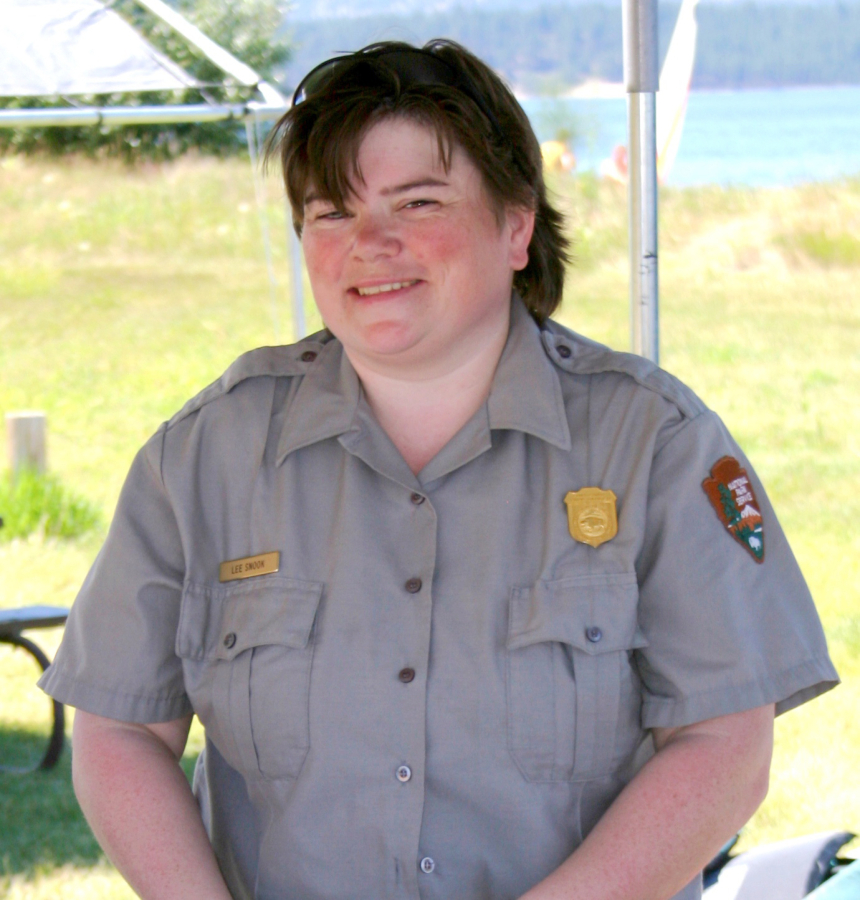Park ranger Lee Snook went looking for salmon and caught a bobcat.
Snook caught the action on video earlier this month as that bobcat stalked and snagged a salmon in Olympic National Park. The cat got lunch and Snook wound up with a viral video.
“The first person who saw it said that would go viral,” said Snook, a graduate of Columbia River High School and Clark College.
“It’s kind of a joke: People like their cat videos.” Her colleagues were right; the video was widely distributed and has received more than 1 million views.
Snook is chief of interpretation and education at the national park in Northwest Washington. Her encounter with the bobcat resulted from an opportunity to get away from her desk.
“This is an office job,” Snook explained a few days ago by phone.
“A co-worker was showing a new employee around,” she said. As a relatively recent arrival herself, “I tagged along. I went to see the salmon in the Hoh River. I’d never seen that before.”
After stopping at the Hoh Rain Forest Visitor Center, Snook set out on her own. She walked over to Taft Creek, a tributary of the Hoh River.
“A bobcat caught my eye. It was on other side of the bank. It was looking to catch a salmon,” Snook said.
She shadowed the bobcat from the opposite bank as the animal waited for a fish to get within range. At one point, Snook lost track of the cat. Then, suddenly, there it was again.
“It had been there all the time,” Snook said, although she hadn’t seen it. “It makes me wonder what else is out there watching me that I have never seen.”
The bobcat didn’t pay any attention as Snook took out her iPhone and shadowed it. After about 30 minutes, the bobcat finally claimed its catch and hauled the salmon into the woods.
“I was excited to show my co-workers,” Snook said, and they envied her bobcat encounter.
“They hadn’t had that same experience. They’re pretty elusive creatures. They are a nocturnal animal, wary of humans. To have a opportunity to see nature play out is impressive.”
Olympic National Park is the eighth stop in Snook’s Park Service career, which started in her hometown at Fort Vancouver National Historic Site.
After graduating from Columbia River in 1988 and Clark College in 1992, Snook attended Syracuse University in New York. She was figuring on a career in education when she took a job as a counselor at a Girl Scout camp in upstate New York.
After she took a Girl Scout group to a national park, “It looked like a great job,” Snook said. “I asked a woman there about going to work for the Park Service. She said to volunteer, so I volunteered at Fort Vancouver National Historic Site in 1997.
“I was a seasonal employee for two years and got a permanent job in 2000 in Philadelphia,” at Independence National Historic Park. She also has worked at Caplin Volcano National Monument in New Mexico; Lyndon B. Johnson National Historical Park in Texas; Rock Creek Park in Washington, D.C.; and two other locations in this state, Lake Roosevelt National Recreation Area and Mount Rainier National Park.
“It’s an interesting job,” Snook said, noting that we have 413 national parks. Their attractions range from natural wonders that have been around for millions of years to historic sites that represent a couple of centuries of American heritage to wildlands that share their treasures in the span of seconds.
“In the National Park Service,” Snook said, “they say you get paid in sunsets.”
And if you’re lucky, a bobcat shows up as a bonus.




